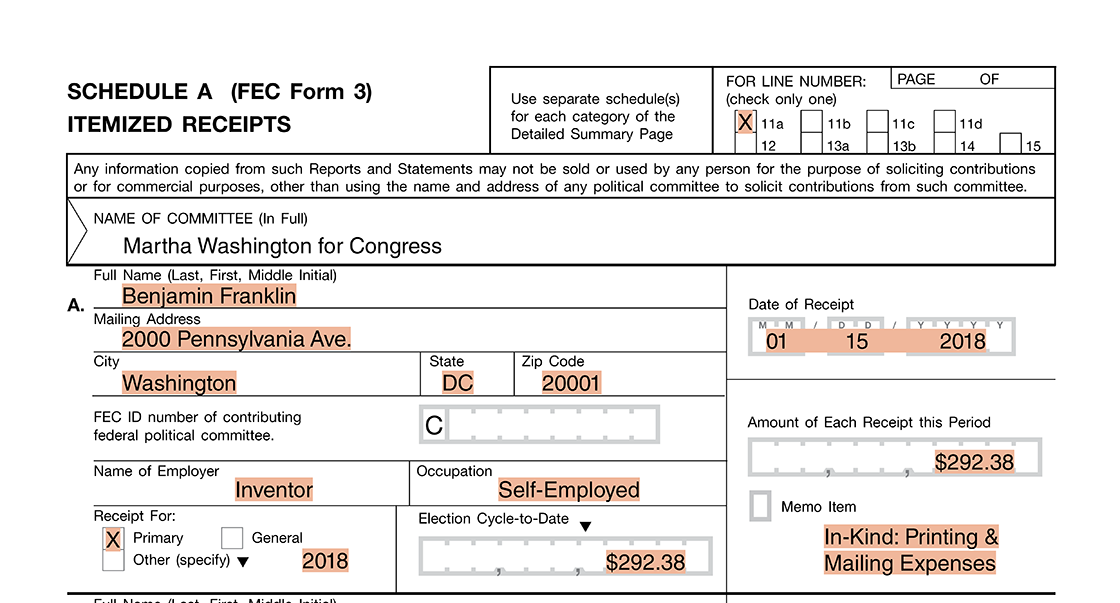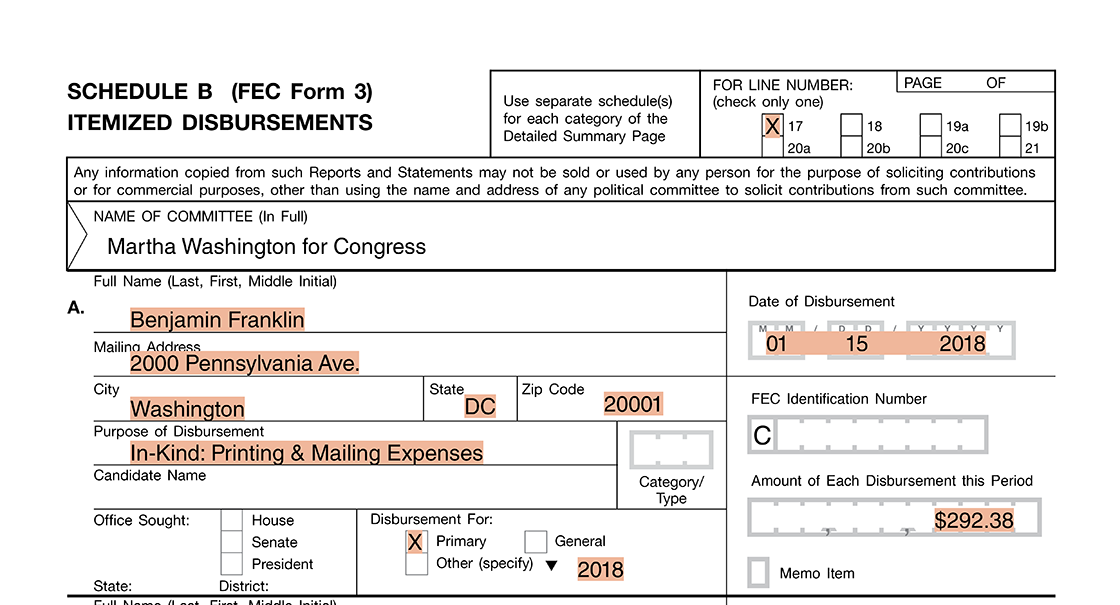In-kind contributions
An in-kind contribution is a non-monetary contribution. Goods or services offered free or at less than the usual charge result in an in-kind contribution. Similarly, when a person or entity pays for services on the committee’s behalf, the payment is an in-kind contribution. An expenditure made by any person or entity in cooperation, consultation or concert with, or at the request or suggestion of, a candidate’s campaign is also considered an in-kind contribution to the candidate.
The value of an in-kind contribution—the usual and normal charge—counts against the contribution limit as a gift of money does. Additionally, like any other contribution, in-kind contributions count against the contributor’s limit for the next election, unless they are otherwise designated.
Reporting on candidate forms
House and Senate committees report in-kind contributions from individuals on Form 3, Line 11(a). In-kind contributions from party committees are reported on Line 11(b), and in-kind contributions from PACs are reported on Line 11(c).
When determining whether to itemize an in-kind contribution, treat it the same as a monetary contribution. In-kind contributions from other committees are itemized regardless of the amount. In-kind contributions from individuals are itemized if the contributions from the source aggregate over $200 during the election cycle.
The amount of an in-kind contribution must also be included in the committee’s total operating expenditures on Line 17 in order to avoid inflating cash on hand. It is itemized as an operating expenditure on Schedule B, supporting Line 17, only if it has to be itemized as a contribution on Schedule A.
Step 1: In-kind reported as a receipt

The committee reports receiving printing and mailing expenses paid by a supporter as a contribution. It reports the contributor’s name (Benjamin Franklin), mailing address, employer, and occupation. It also reports details about the in-kind, including its value, the date it was given, election designation, and aggregate election cycle-to-date total for Benjamin. The committee also includes a notation “In-Kind: Printing and Mailing Expenses.”
Step 2: In-kind reported as a disbursement

The committee also reports the value of the printing and mailing expenses as a disbursement to avoid inflating their cash on hand. The payee is the contributor’s name, Benjamin Franklin. The purpose of disbursement clearly states “In-Kind: Printing and Mailing Expenses,” so that the type of in-kind given to the committee is clear on the public record.
Reporting with FECFile
On the Summary Page tab, right click on the contributor’s category and select “new.” Enter the contributor’s information and check the “in-kind” box. This will ensure that the contribution is on both Schedule A and B. In the description field, “In-kind:” will be added automatically. Add a description of the in-kind received.
